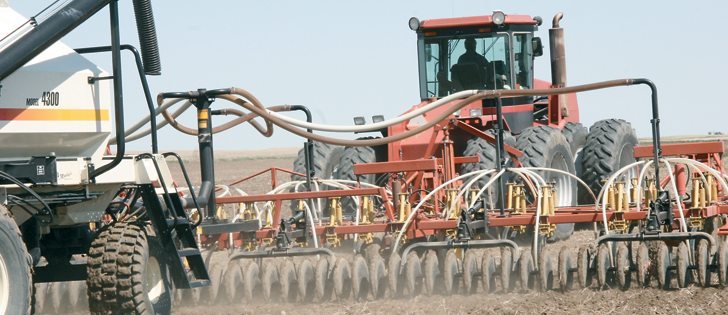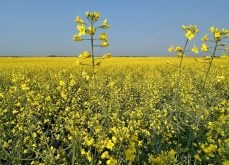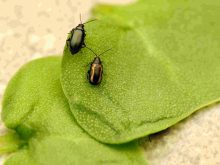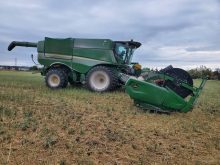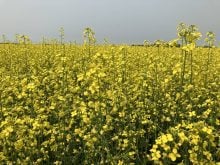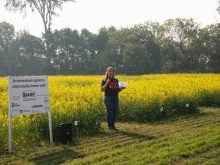Producers can expect 40 to 60 percent canola seed survival under average conditions, says the field research manager for SeedMaster.
However, Owen Kinch said there is a significant potential savings for producers who can reach the top end of that range.
“The difference between 40 percent seed survival and 60 percent seed survival, we’re looking at a variance of around two pounds per acre of a seed rate, which translates into $26 per acre,” Kinch said.
Check the planting population where a producer has already seeded is an important strategy to increase canola seed survival.
Read Also

Farm writers descend on Winnipeg for eye-opening conference
Digital editor Greg Berg reports on the Canadian Farm Writers Federation conference held in Winnipeg in September 2025.
“Very few people go out, throw a ring and count their canola plants. Very few people actually know what they’ve got,” said Kinch.
Producers should make a note when conditions change, whether it’s weather, soil type or seeding settings. They should then return to see how the plant population was affected.
Seeding depth must remain consistent and shallow, between half an inch to an inch deep.
“Canola plants that emerge from too deep and too shallow will have highly variable emergence dates, which greatly affects crop uniformity,” he said.
Maximum seeding speed depends on soil type, moisture conditions, opener type and row spacing.
Kinch said slower is always better when improving canola’s chance of survival.
“(With hoe drills), too high of speeds can cause the rear openers to throw the soil over to where the front openers on the machine have already seeded,” he said.
“It will affect the depth of the seed and cause uneven or reduced emergence.”
High air speed velocities compromise seed placement in the furrow.
As well, fan r.p.m. must increase as more product is placed with the seed and seeders become wider. However, air velocity increases along with fan r.p.m.
“I’m a very firm believer that if we need to seed-place starter fertilizer, if it’s not in the liquid form, it shouldn’t be going into the seed row,” Kinch said.
“You have to limit air seed velocity because we want that canola seed to be gently dropped into furrow at the slowest seed as possible,” he said
Growers also need to adjust packing pressure to match soil conditions. It should be reduced in wet conditions to lessen hard crusting on the furrow and increased in dry conditions to help conserve moisture, seal up the furrow and in-crease seed to soil contact.
Canola can germinate when soil temperatures are as low as 2 to 3 C, but producers should expect lower germination rates in low temperatures.
Warmer soil helps the pop-up effect, increases seed survival and improves uniformity of emergence. One hundred percent germination takes place in eight days at 6 C, Kinch said.
Producers who are aiming for a proper plant population of five plants per sq. foot should be prepared to increase the seeding rate when seeding under less than ideal conditions.
For example, Kinch said they should expect slightly lower seed survival when seeding into tilled soil and adjust their rates accordingly.
“When the opener is travelling across the field, we aren’t creating that consistent ledge or furrow, and basically our depth is being compromised when we are travelling through the soil.”
Producers should ideally try to seed between the stubble stand from the previous year.
Kinch said a canola seed survival rate of more than 70 percent is possible if producers are vigilant in providing the best possible conditions.
Contact robin.booker@producer.com


